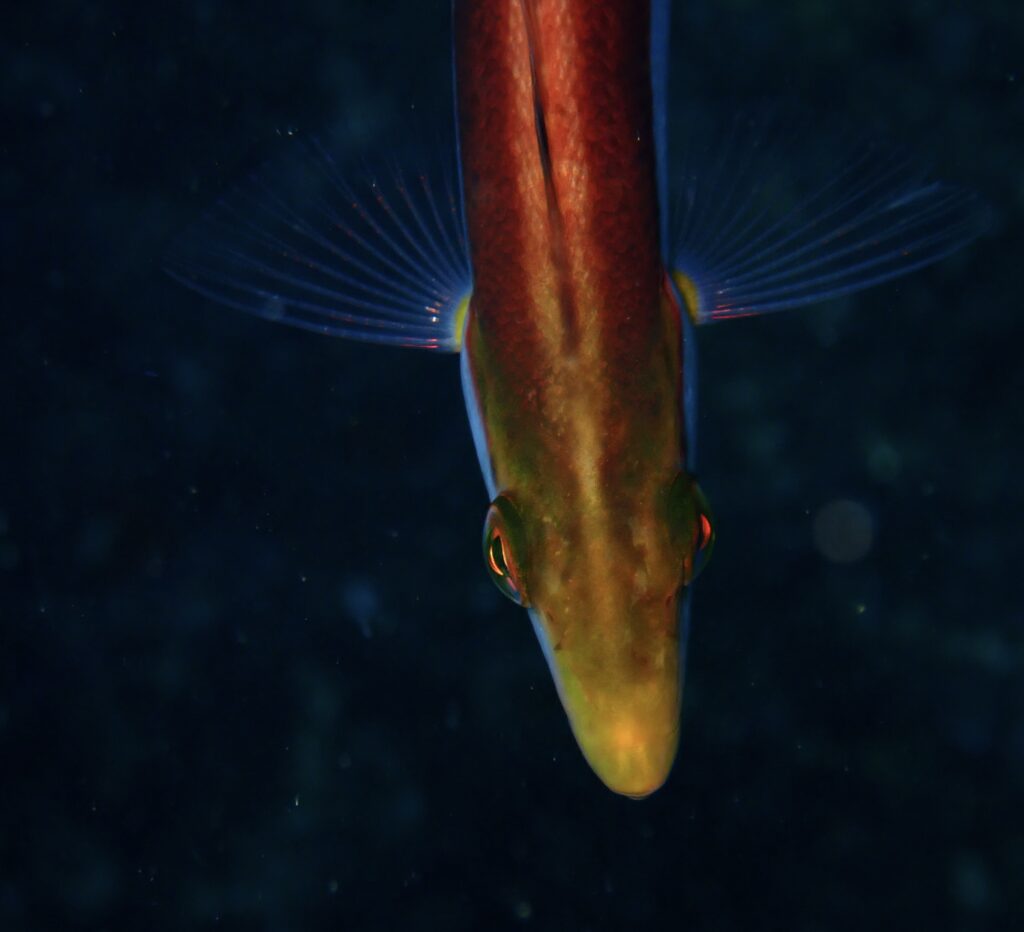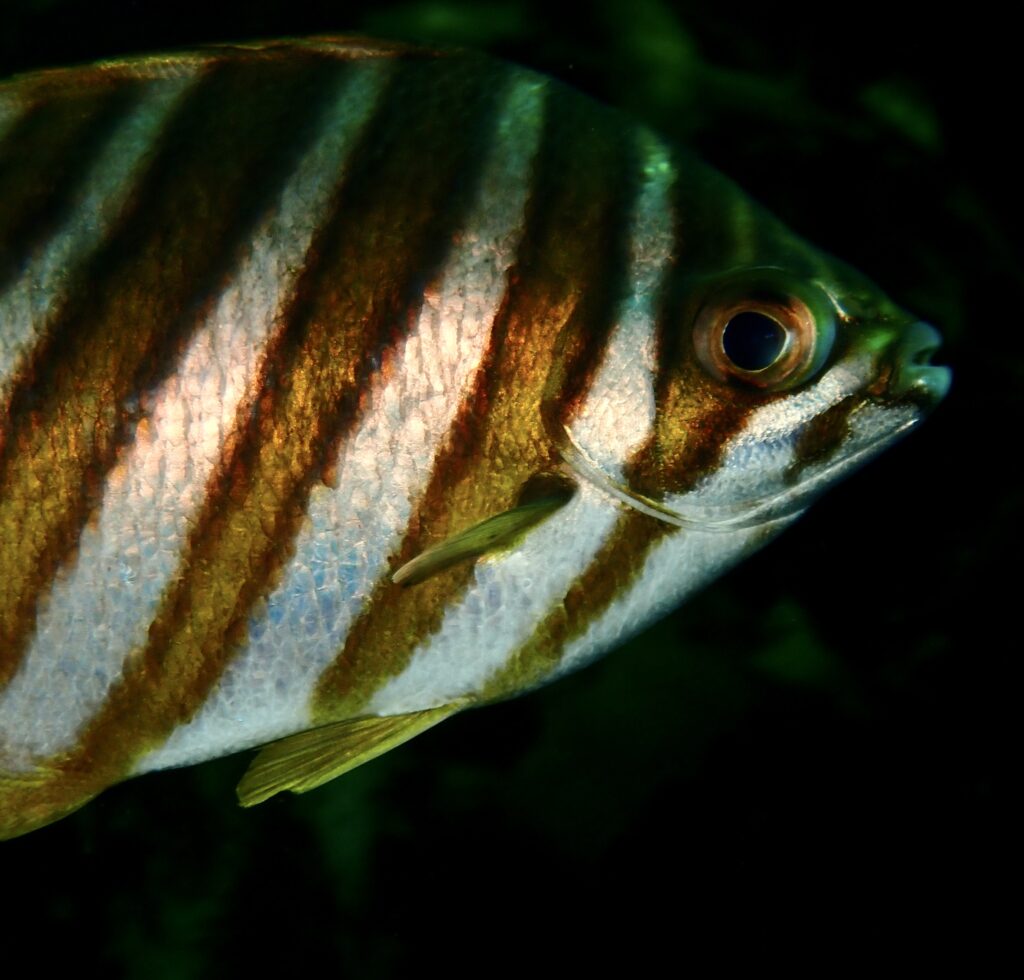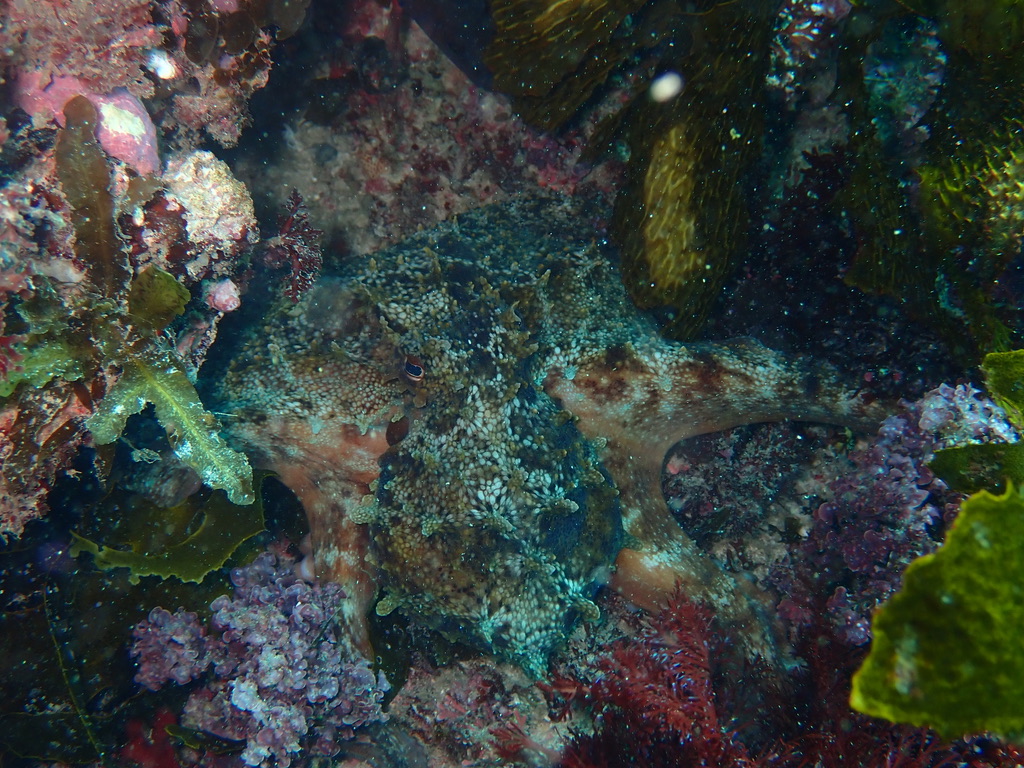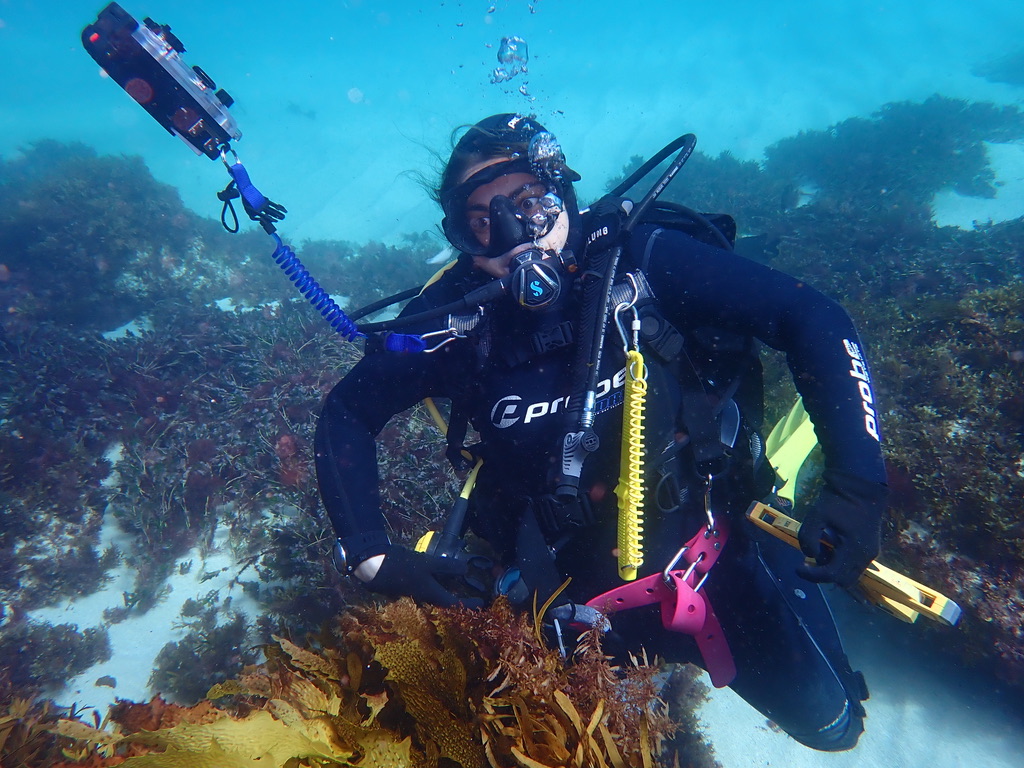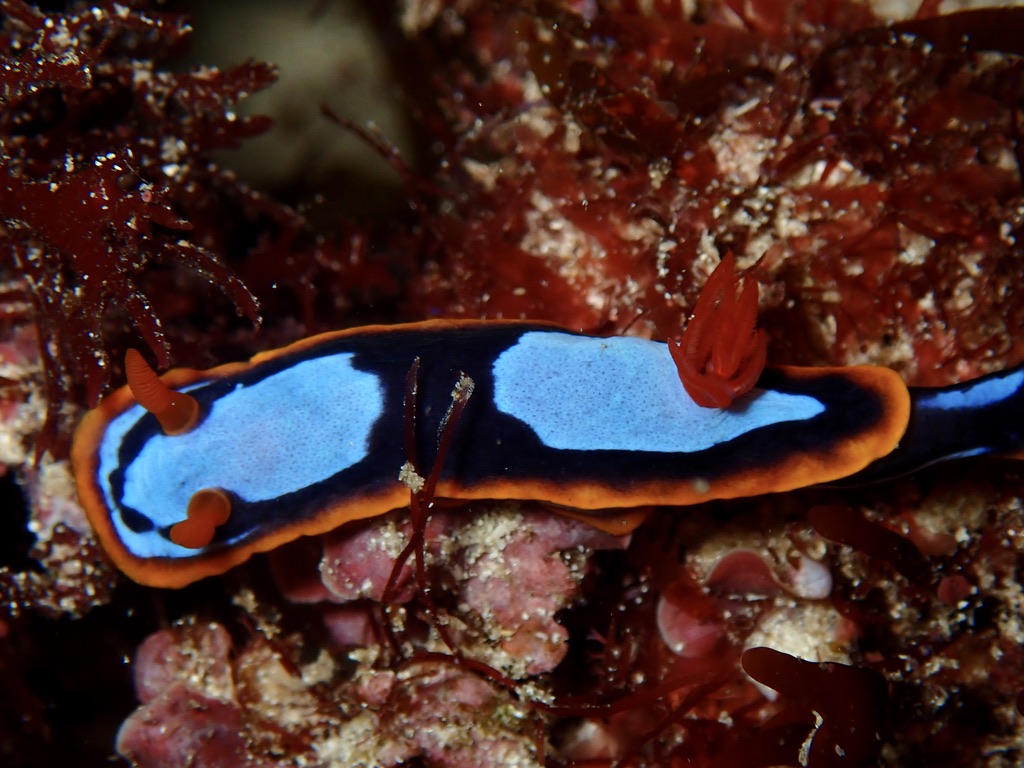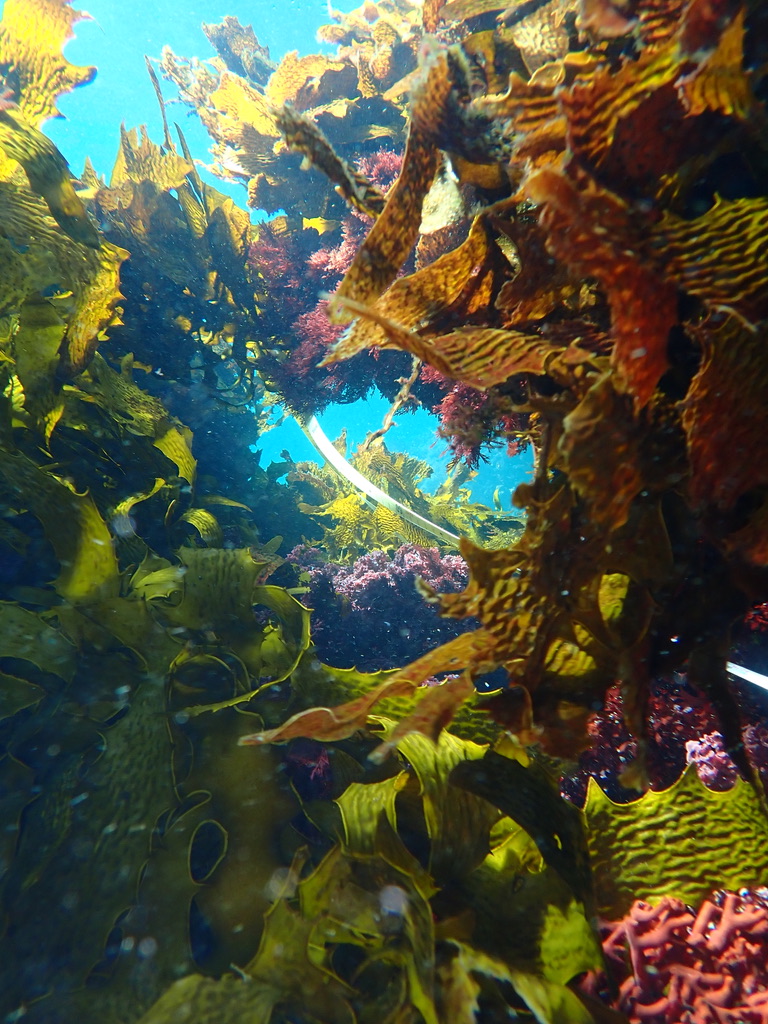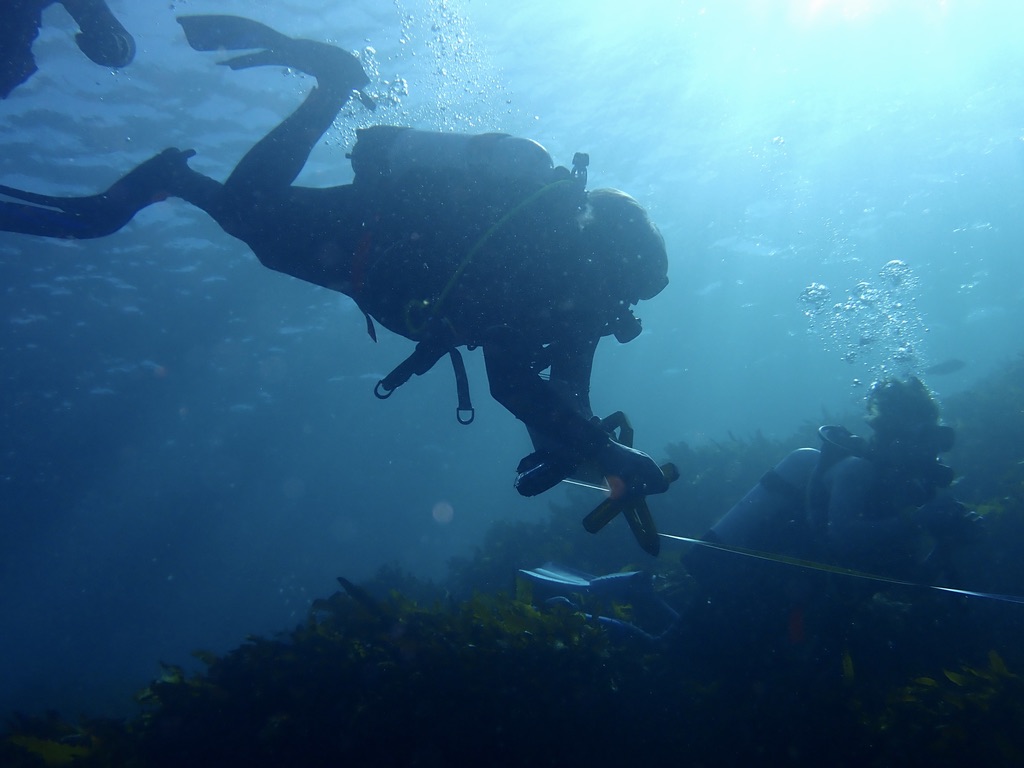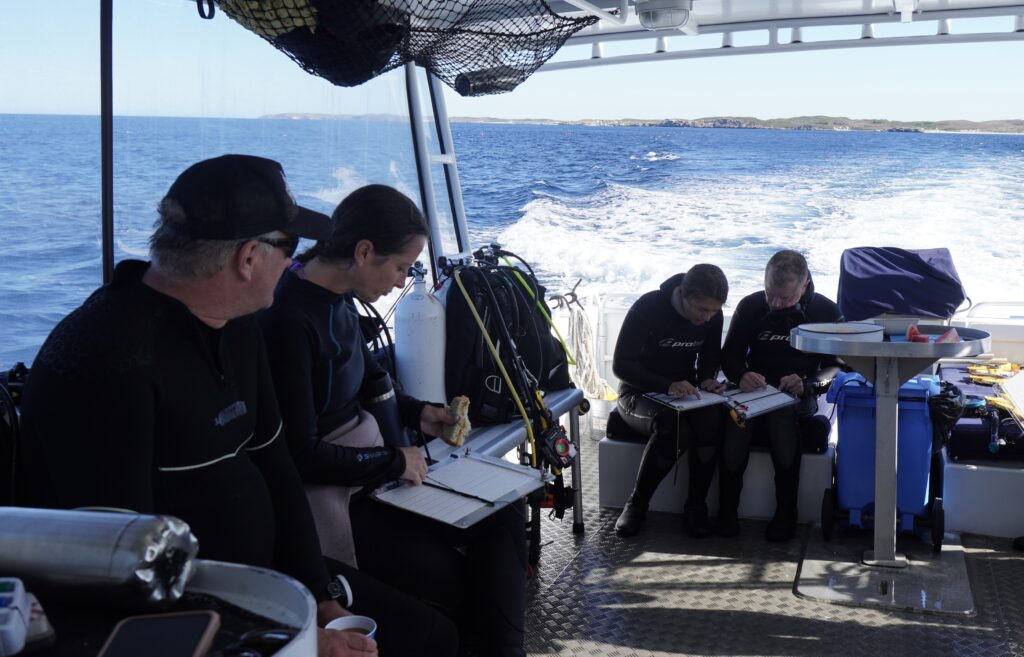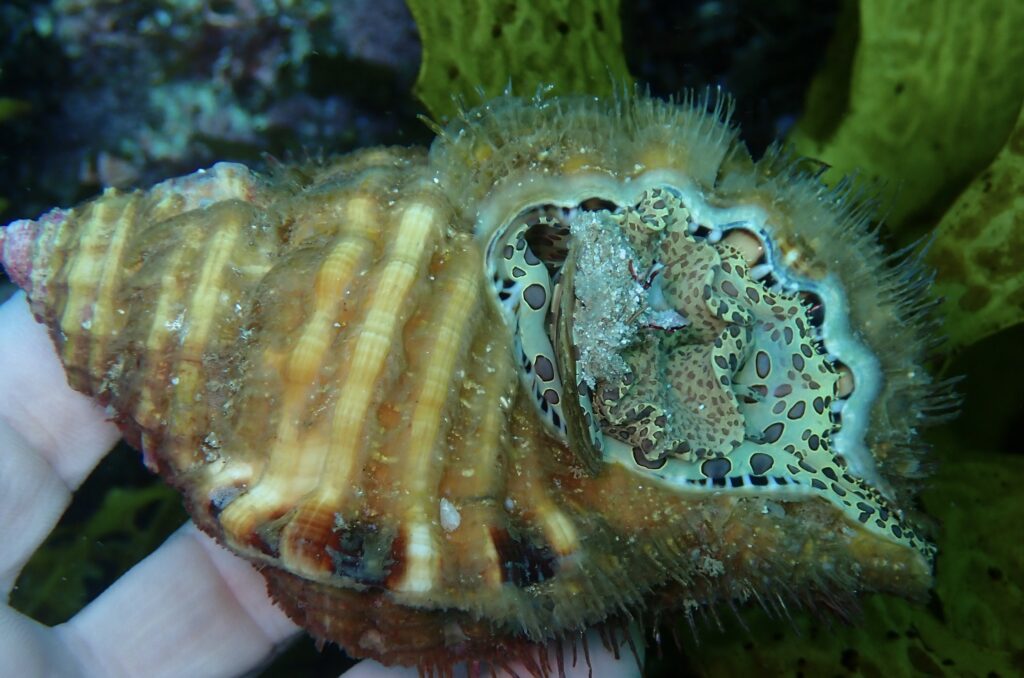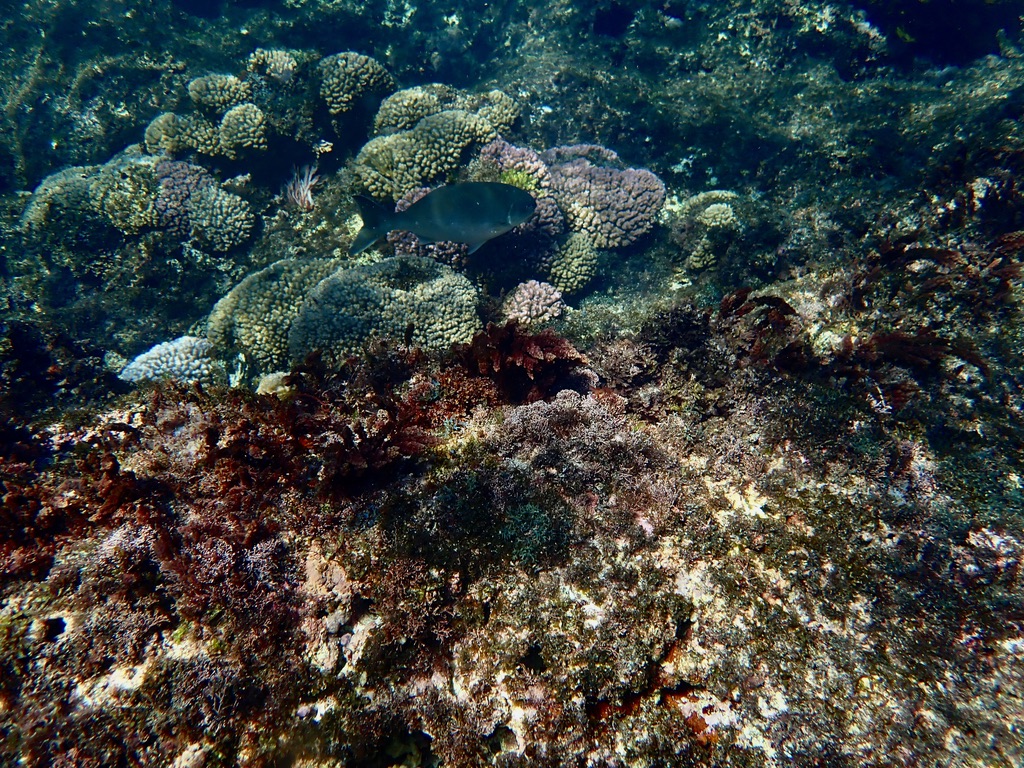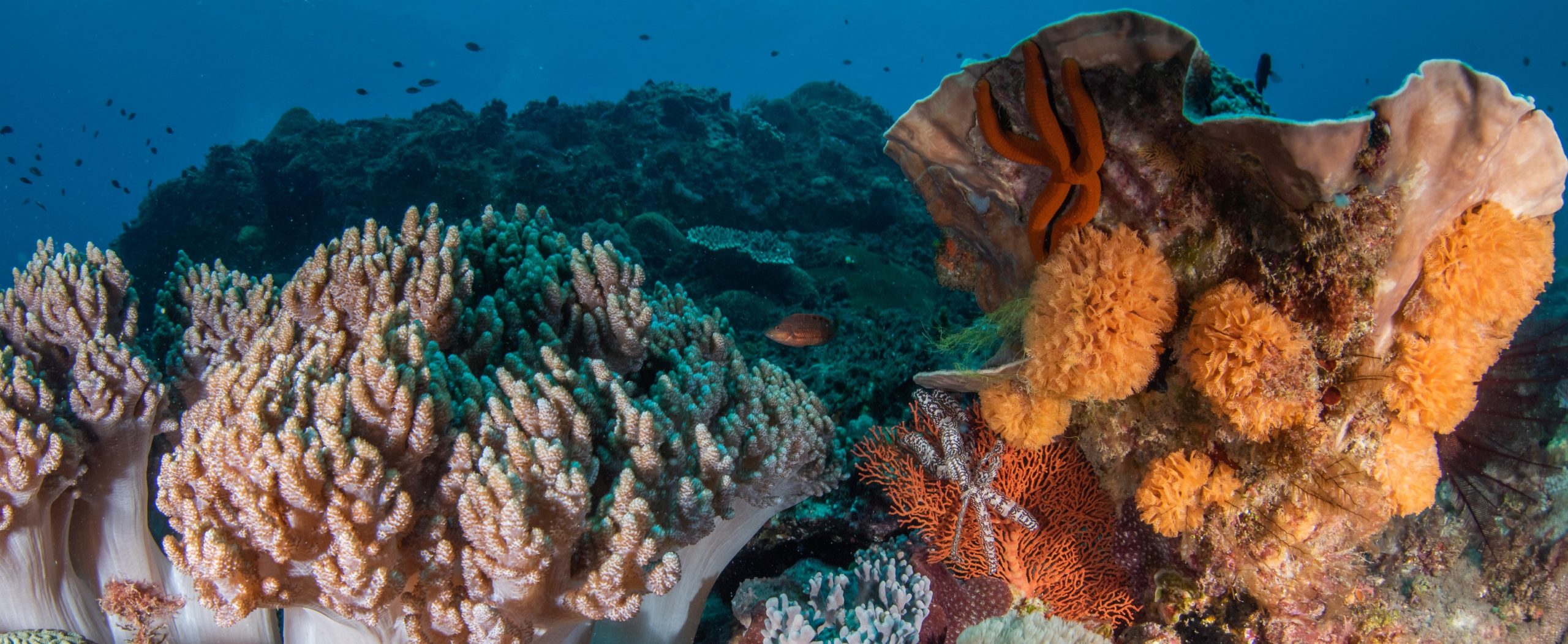Four days. Eight sites (both inside and outside marine sanctuary zones). Sixteen transects. 129 species. 15,928 individual fish and invertebrates counted. The 2025 RLS Rottnest surveys are done and dusted!
This year’s team looked a bit different to usual. After our wonderful WA survey regular Kevin was sidelined with an injury, and with WA's resident trainer and coordinator Paul Day only able to make it for the first two days, it became a truly national effort to get the 2025 training underway.
Flying in from RLS HQ in Tassie, I (Lexi Lewis!) swapped the inbox for a wetsuit to help coordinate the trip. Meryl Larkin, our fearless trainer, jetted over from NSW, and volunteer Monique Bregman from Victoria. We met the fresh-faced, all-WA trainee team at the Fremantle ferry terminal, ready for the adventure.
Rottnest once again proved the perfect classroom for training our newest Reef Life trainees Oceané, Amaya, Joana, Galen, and George—marine nerds and newbies alike who bonded instantly. Fish chat had already kicked off before we even made it onto the ferry. These legends from different backgrounds became fast friends, geeking out over all the weird and wonderful critters we’d meet.
Between bakery pitstops, Simmo’s ice cream runs, and a few very well-timed pub nights (which, of course, slotted in perfectly around our rigorous data entry sessions), this group proved that science and silliness are a winning combo.
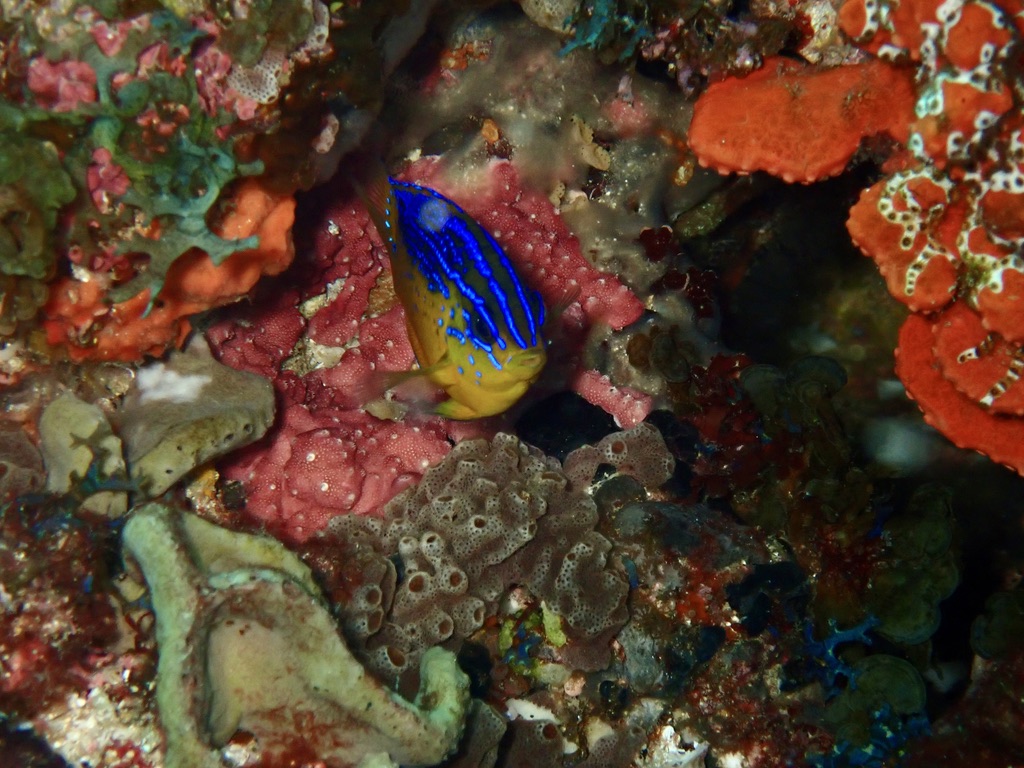
Helen from the Rottnest Island Authority kindly booked us two vehicles for the duration of our stay on the island. We were told that one of them was a Gator. Cue confusion – were we about to be handed literal gaiters to trudge through some imaginary mud to reach our accommodation? (Mind you, not a speck of mud in sight).
When the vehicles finally rolled up, we were stoked to discover that the “Gator” was actually a nifty little off-road buggy – the kind of thing that screams “island adventure.” Unfortunately, despite its rugged look, the poor thing could barely hit 20 km/h – let alone the posted 40. Top speed was only achievable with a long run-up, one person aboard, and absolutely nothing in the back. But hey, crawling along just meant more time to soak up the stunning island views as we were overtaken by cyclists, pedestrians, and possibly even the quokkas.
Each day, we rotated the role of designated “Gator Girl” or “Gator Boy,” depending on who was behind the wheel. But one fateful day, after a solid session of surveying (and a compulsory quokka hang disguised as a “coffee break” in the township), we returned to find the Gator... gone. Along with it, all our dive gear. Panic levels varied: some were stressed about expensive cameras and RLS equipment, while others were spiralling over more immediate crises like, “How am I supposed to drink water without my water bottle?”.
The team split up and started questioning anyone in a uniform, on a desperate Gator hunt. Eventually, we returned, defeated – only to find it sitting exactly where we’d left it. Even more confused, we asked around again, this time cornering someone in a Parks uniform. The mystery was solved: there’d been a quokka emergency. One of the little legends was injured and needed urgent help, and with no other vehicles nearby, our beloved Gator had been hijacked for a true hero’s mission. Fair enough – we all agreed saving a quokka definitely trumped rushing back for data entry.
With the quokka safe and the Gator returned, we resumed our slow crawl back to base. The rest of the day was spent the way all great marine adventures end – hunched over laptops, uploading dive data into Excel at a snail’s pace that would’ve made the Gator proud.
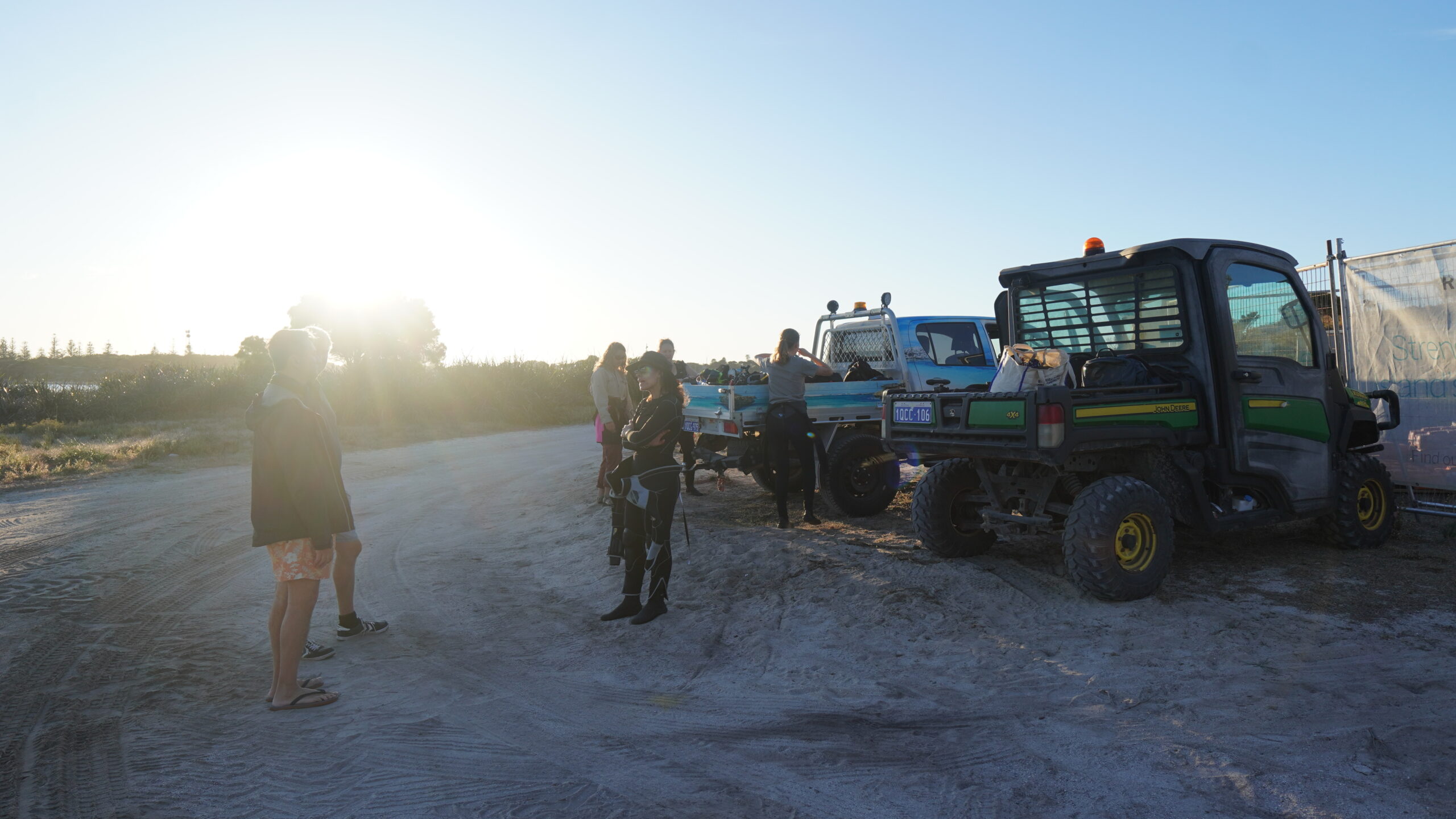
This year, for the first time in Rottnest RLS history, we didn’t need to carry tanks back to fill after each dive. Our tanks arrived full and ready each morning on the Bucketlist Diver charter boat (bless). And although Perth had been flooded with rain the week before, we were blessed with sunny skies and calm seas for all four days.
We were living in luxury.
That said, it was a bit of a bumpy start. Day one brought some swell at the jetty, and our set-up was more chaos than calm as we scrambled to get to our first site—Crystal Palace. Ironically, there was nothing regal about how I was feeling... a touch of seasickness led to one slightly disorienting first dive.
Turns out I wasn’t the only one confused, as the trainees were thrown right into the thick of the sheer underwater juggle that is UVC. From figuring out which transect line to be on, to counting how many fish were in that school as they swam past, to catching runaway reels and pencils - it was a crash course in underwater multitasking. But after that first dive, the whole team locked in for a much smoother ride from then on.
The subsequent dives were a showcase of the magic that makes Rottnest such a fascinating place to explore; encompassing an incredible mix of corals and kelps, rocky reefs and sponge gardens that bring together a mix of temperate and tropical species. Some days we dove among dark caves, while others had us floating over clear shallows with plenty of seagrass lining the reefs.
Our trainees were soon headfirst under ledges, exploring sponge-lined caves and crevices in search of cuttlefish, stingarees, octopus, crays, and nudibranchs galore. Western king wrasse (Coris auricularis) popped up at every site, alongside big schools of bullseyes, west Australian salmon (Arripis truttaceus), silver drummer (Kyphosus sydneyanus), and western yellowfin bream (Acanthopagrus latus). With sharp eyes, you might even spot a western blue devil (Paraplesiops meleagris)—or, if you’re lucky maybe even a juvenile one.
Scalyfins were everywhere, so much so that we ended each night with a fish school refresher just to keep up. Lance blennies (Aspidontus dussumieri) stole the show as usual with their cheeky grins poking out from reef holes, and a few divers even caught sight of harlequin fish (Othos dentex). For the rest of us, gold-spotted sweet lips (Plectorhinchus flavomaculatus), moon wrasse (Thalassoma lunare), and old wives (Enoplosus armatus) were more than good enough company.
Our final site tested everyone’s resilience—with swirling swell and terrible visibility, the kelp looked like fish and the fish looked like kelp. It was a chaotic soup of a dive, perfect for the final assessment.
The Grand Finale: Dirty Dancing, But Make It Underwater
After the final survey, Mon, Oceané, and I had some spare time on our safety stop. Naturally, we celebrated with “dirty diving”—a full underwater ballet. With a few bows, spins, and even the lift (Mon as Patrick Swayze, Oceané as Baby). All captured on camera. Will it see the light of day? Time will tell. It may be locked in the RLS vault forever.
The biggest thank you to all of the volunteers who make these trips possible, and for making them such a joy as well! And a special shoutout to coordinators and legends Paul and Kevin, who have sacrificed so much of their time to keep the WA surveys going year after year, and trainer Mez, who has been dedicating her time to RLS for 10 years now. Thank you to all the new volunteers and those behind the scenes who make it possible for us to survey these locations in the first place.
Another huge thank you to Helen at the Rottnest Island Authority, who provided us with accommodation with flash new bathrooms, vehicles including the famed gators, and ferry tickets to the paradise just across the ditch. We hope to see you again next year!
